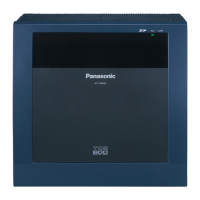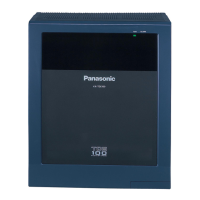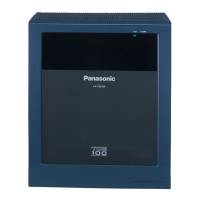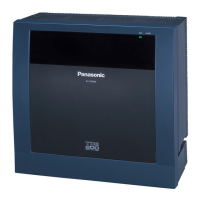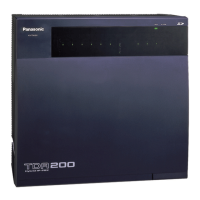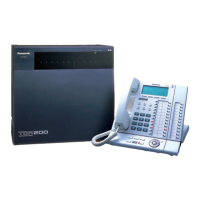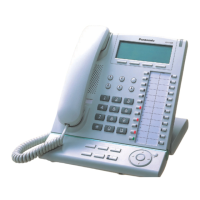2.1.3 Network Devices
You must evaluate the network devices that are used in the existing network to see if a VoIP network can be
implemented. Below are the points that should be evaluated.
Can the firewall pass packets appropriately?
If the VoIP network contains a firewall, the firewall must be configured appropriately to allow VoIP packets,
listed in the table below, to pass through the network without being blocked by filtering.
For more information, consult your network administrator.
[IP Packets from IPCMPR/IPCEMPR/IP-EXT16 Card and IP Telephones]
Protocol Description TCP/UDP Default Port No.
RTP (IP telephone
connected to IPCMPR/
IPCEMPR)
Real-time Transport Protocol.
Used for voice data transmission.
UDP 12000 to 12255
RTP (IP-PT connected to
IP-EXT16)
UDP 8000 to 8063
Maintenance (IPCMPR/
IPCEMPR)
Panasonic proprietary protocol.
Used for communication parameter
negotiation with the PBX, download of
country/area data, confirmation of
connection with the PBX, and
notification of error messages and
statistical information to the PBX.
TCP 35300
Maintenance (IP-EXT16) UDP 9300
Maintenance (IP
telephone)
UDP 9301
MGCP (IPCMPR/
IPCEMPR/IP-EXT16)
Media Gateway Control Protocol.
Used
for call control command data and
LCD/LED data transmission.
UDP 2727
MGCP (IP telephone) UDP 2427
DHCP (IPCMPR/
IPCEMPR)
Dynamic Host Configuration Protocol.
Used
for receiving an IP address from a
DHCP server.
UDP 67, 68
DHCP (IP telephone) UDP 67, 68
FTP (Port mode) File Transfer Protocol.
Used
for
receiving a data file from a FTP
server to upgrade the firmware version.
TCP 20, 21
SNTP (IPCMPR/
IPCEMPR)
Simple Network Time Protocol.
Used for clock synchronisation.
UDP 123
SNMP (IPCMPR/
IPCEMPR)
Simple Network Management Protocol.
Used for monitoring network-attached
devices.
UDP 161
[IP Packets from V-IPGW16 Card]
Protocol TCP/UDP Default Port No.
RTP/RTCP UDP 12000 to 12255
H.245 TCP 10000 to 10447
H.225.0 Call Signalling TCP 1720
IP Networking Guide 21
2.1.3 Network Devices

